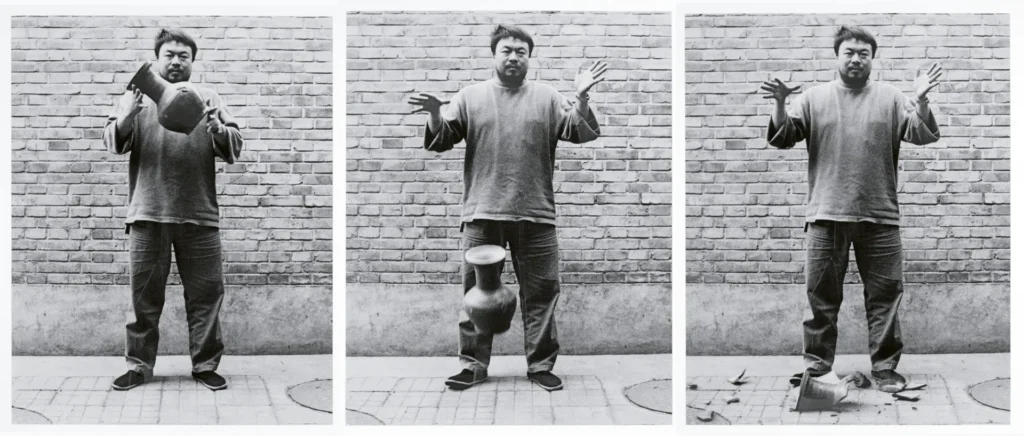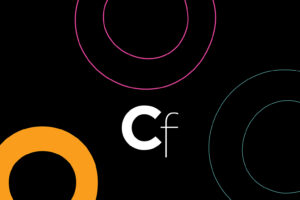In His US Retrospective, Ai Weiwei Takes Old Ideas to New Extremes

The word “fuck” in giant neon letters, (FUCK, 2020), greets visitors to the Seattle Art Museum’s exhibition “Ai, Rebel: The Art and Activism of Ai Weiwei,” the superstar artist’s largest United States retrospective ever. The glowing expletive about sums up the prevailing liberal mood in the country these days—though perhaps not in the way the show’s curator, Ping Foong, intended. Like the nearby sculpture of a human hand making the gesture, (Middle Finger, 2000), and the photographic series in which Ai gives the same to sites such as the Eiffel Tower and Tiananmen Square (“Study of Perspective,” 1995–2011), FUCK is meant to convey defiance. Just as much, though, it conveys frustration, even impotence, in the face of abusive state power.
To be clear, Ai’s oeuvre repeatedly demonstrates his refusal to be cowed by the political persecution the Chinese government has inflicted on him, most famously his brutal 2011 arrest and detention on tax evasion charges. And many parts of that oeuvre bristle with poignance and wit. But as the second Trump presidency takes a wrecking ball to domestic institutions and civil rights, as well as to the post–Cold War international order, one might wonder what the artist’s strategies offer our current moment. Platitudes about raising consciousness and challenging authority will abound, but the most useful takeaways are subtler and stranger. “Ai, Rebel” holds a mirror up to recent liberal paradigms of political art, and unwittingly suggests their symbolism is in part compensatory, offering an aesthetic outlet for feelings of powerlessness.
Perhaps the strangest thing about Ai’s work, seen all together in one place, is how familiar, even unoriginal, it appears. Part of that is by design: Ai remixes the classics. Duchamp’s influence permeates everything, from a found mailbox (U.S. Mail, 2020), to a thicket of gnarled rebar salvaged from the 2008 Sichuan earthquake (Forge, 2008–12). Many other works allude indirectly to readymades, as in his iconic cross-cultural mash-up Han Dynasty Urn with Coca-Cola Logo (2011). Still others play with duplication, such as his replicas of ancient Chinese porcelain vessels, or his Warholian iterations of painted Mao Zedong portraits. Even his recent Lego works translate classic Western paintings, by figures such as Rubens and Munch, into blocky candy-colored versions of the originals.

It’s not just the contents of his works that appear familiar but also their forms, which span the repertoire of contemporary political art. There’s Conceptualist documentation that bears witness to catastrophe, such as Names of the Student Earthquake Victims Found by the Citizens’ Investigation (2008–11), a sobering inkjet print catalog of the Sichuan earthquake’s 5,196 child victims. There’s performance documentation, as in the before, during, and after shots comprising his infamous triptych, Dropping a Han Dynasty Urn (1995). There are impressive aggregations of emotionally freighted objects, including a 50-foot-long snake sculpture from 2009 comprising interlocking children’s backpacks to memorialize the Sichuan victims. The list of aesthetic movies—public art installations, documentary films, activist social media campaigns—could go on, and will be familiar to art audiences, even if viewers less acquainted with the canon might find more shock value in them.
At this stage in Ai’s career, the question is not whether these qualities make his work original or derivative, or good or bad. His oeuvre contains plenty of powerful work—my favorites are the spiky assemblages of things like furniture or bicycles—that does not purport to be unique in terms of art history (or is unique perhaps in the sense that he takes old ideas to new extremes). The question is what it reveals about the popular understanding of political art, given that his work epitomizes so many of the genre’s tropes.
At the literal and figurative center of “Ai, Rebel” stands 81 (2013), a reproduction of the solitary confinement chamber where the artist was detained by the Chinese government, in an undisclosed location, for 81 days in 2011. The room’s bare lightless interior feels claustrophobic, a sense exacerbated by the padding that covers the furniture to prevent self-harm. The sculpture’s exterior, left unfinished because the artist never saw the room from the outside, has an amnesiac feel. The forbidding artwork differs in tone from the trickster Conceptualism that characterizes Ai’s other work. Its starkness renders palpable its harrowing stakes, eliciting despair rather than defiance, and suggesting there’s nothing uplifting about the artist’s tribulations. Standing inside the sculpture feels like being a rat plopped down in a maze, and grasping—FUCK—that you have limited control over your fate.

That sense of curtailed agency forms the retrospective’s heart of darkness, even if it’s not the message you’re meant to take away from the show. 81 is situated in an exhibition section titled “Watching Ai Watching Power,” its strained bit of wordplay tiptoes around the displayed works’ existential and political binds. Bearing witness to state malfeasance is a necessary task, well-suited to art’s capabilities. But, even at its most poignant, that task has practical limitations; at its most flat-footed, it verges on farce. Ai’s awkward 15-by-11-foot Lego reproduction from 2019 of the Mueller Report cover page, for instance, strains after purpose, as if its showy size and materials could compensate for its toothless political gesture.
The retrospective’s bold four-letter-word of an epigraph also evinces showmanship. But it has a deeper meaning: the title FUCK references Ai’s Beijing design studio, FAKE, which can sound like the English epithet when spoken in Mandarin. This thinly veiled pun is, sure, a form of defiance, but not the truth-to-power kind. Instead, it hints at the way some citizens must speak in code under authoritarianism, at the ersatz facades they adopt to maintain plausible deniability against censorship or worse. The pun challenges authority but also recognizes the dangerous power imbalance inherent to that challenge. As a punitive political atmosphere looms over US citizens, “Ai, Rebel” provides uncomfortable glimpses of how things might come to look and feel.



